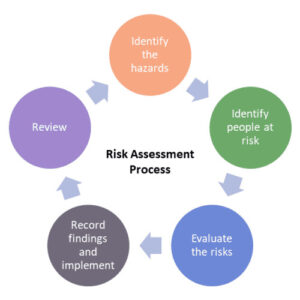Introduction
The aim of this toolbox talk is to increase staff awareness of risk assessments the workplace.
The use of regular toolbox talks, if done effectively, will significantly improve the safety culture within your organisation. This will increase the safety awareness of the workers, and as a result reduce the likelihood of accidents and unsafe occurrences.
Legislation references
- Health & Safety at Work Act 1974
- Management of Health & Safety at Work Regulations 1999
Risk assessments at work
Employers have a legal duty to conduct suitable and sufficient risk assessments. These duties are covered in…
- Management of Health and Safety at Work Regulations
- Additional specific requirements
- General duty to ensure good health and safety within the workplace
Conducting risk assessments is more than good practice. They are proven to be an effective way to identify hazards (potential for harm) and make sure we have the right precautions in place. Ultimately the process helps keep people safe and well.
Risk assessments should be done by a competent person. ‘Competent’ means someone with the right knowledge, skills and experience.
Risk assessments can fail in improving workplace safety for a number of reasons, such as:
- Conducted as a tick box exercise.
- Not involving the right people.
- Failure to consider all the hazards.
- Missing ‘significant’ hazards by not prioritising actions.
- By not consider the control measures carefully enough.
- By not kept them up to date.
A 5-step process to risk assessment

- Identify the hazards
- Decide who might be harmed and how
- Evaluate the risks and decide on precautions
- Record your findings and implement them
- Review your risk assessment and update it
Employees must
Co-operate with your employer’s risk assessment process and check the risk assessments for your activity. Discuss precautions in your team and make sure they’re implemented.
Effective risk assessments save lives

